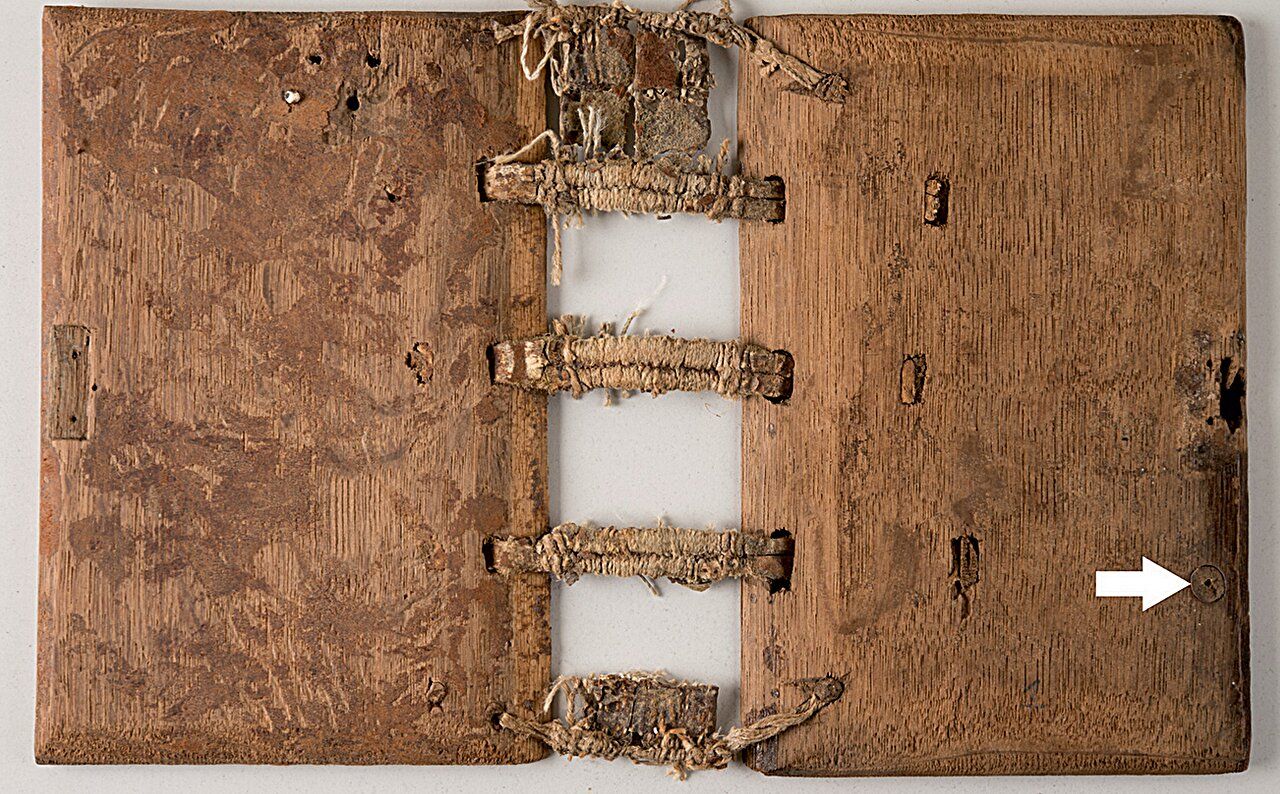This medieval codex hides a secret in its wood 🔍
Follow us on Google News (click on ☆)

Exterior view of the wooden covers of the Codex, with an arrow pointing to the wooden plug.
Credit: Ervin Sestverk in Läänelaid et al. 2025.
The back cover comes from an oak felled between 1454 and 1466 in Lithuania. This dating matches the inscription indicating that the manuscript was completed in 1454. The front cover, however, is much older, originating from a tree cut down around 1366 in Poland. This difference suggests the wood was reused.
Researchers discovered a repaired hole in the front cover, a remnant of prior use. Although its original function remains unknown, this finding highlights the importance of material recycling in the Middle Ages. Artisans often reused available workshop materials.
The manuscript, initially intended for religious use, survived centuries before falling into obscurity. After the dissolution of the Dominican convent in Tallinn in 1525, it was archived without further use. Its content, a Latin-German dictionary, reflects the intellectual life of the time.
The methods used in this study open new perspectives for analyzing ancient books. Combining dendrochronology and isotopic analysis provides precise results on the origin and age of wood. These techniques could be applied to other historical manuscripts.
This research sheds light on little-known medieval craftsmanship practices. Material recycling was common, as seen in the reuse of parchment to reinforce bindings. The covers of the Codex of Türi are a striking example, showing how objects from the past can tell unexpected stories.
How does dendrochronology date ancient wood?
Dendrochronology is a scientific method that analyzes tree growth rings. Each year, a tree forms a new ring, with width varying based on climate conditions. By comparing these patterns with dated references, researchers can determine the exact year of felling.
This technique is particularly useful for historical wooden objects, such as medieval manuscripts. It not only dates the material but also locates its geographic origin. Regional climate variations leave distinct signatures in the rings.
Dendrochronology requires well-preserved samples with enough visible rings. In the case of the Codex of Türi, the back cover preserved 120 rings, allowing precise dating. This method is non-destructive when carefully applied, preserving the integrity of historical artifacts.
Why does strontium isotope analysis reveal wood origin?
Strontium isotope analysis is a technique that determines the geographic origin of materials. Strontium, an element present in soil, is absorbed by plants and trees. Its isotopic ratio varies based on local geology, creating a unique signature.
By combining this method with dendrochronology, researchers can pinpoint not only the age of the wood but also its source. For the Codex of Türi, this approach revealed that the covers came from distinct regions: Lithuania for one, Poland for the other.
This technique is especially useful for studying material movements throughout history. It shows how medieval artisans sometimes used resources from distant regions, reflecting trade networks and recycling practices of the time.